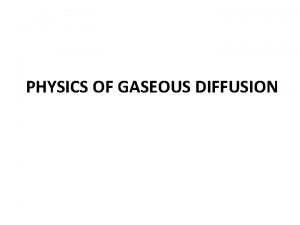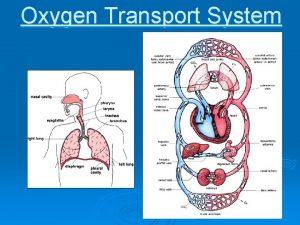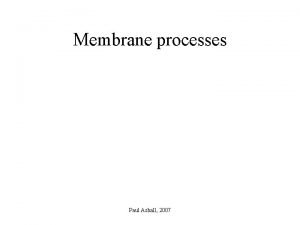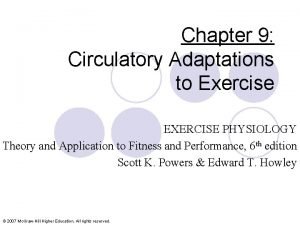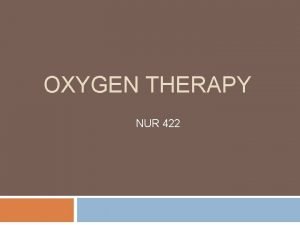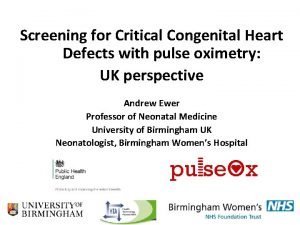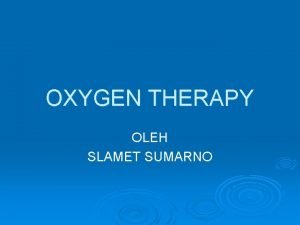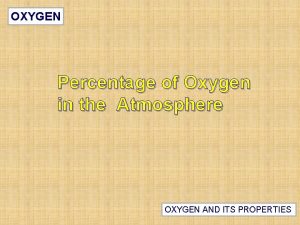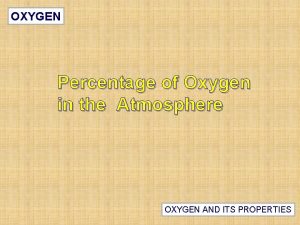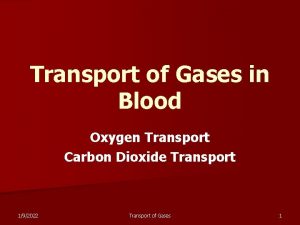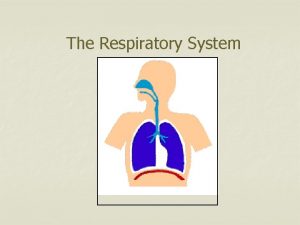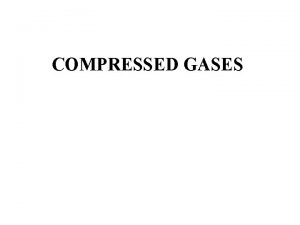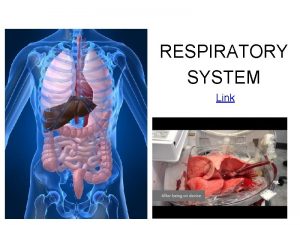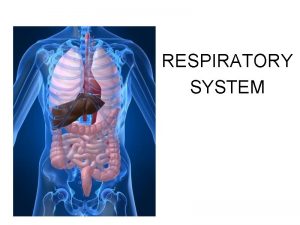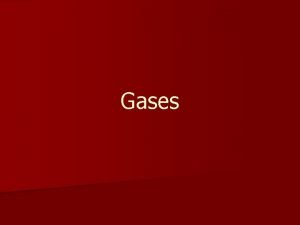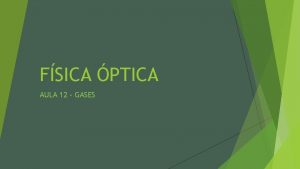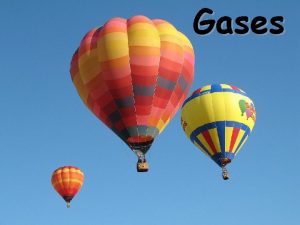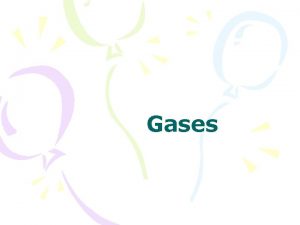Transport of Respiratory Gases Oxygen O 2 transport
















- Slides: 16

Transport of Respiratory Gases శయ సవ య వ ల రవ ణ Oxygen (O 2) transport ఆకసజన రవ ణ Carbon dioxide (CO 2) transport క రబన డయ కసడ రవ ణ DR N SREENIVAS PR GC (A) KAKINADA

O 2 Transport ఆకసజన రవ ణ Molecular O 2 carried in blood 1. 5% dissolved in plasma) పల సమ దవ ర ( 98. 5% loosely bound to each Fe of hemoglobin (Hb) in RBCs )హమగలబన దవ ర ( 4 O 2 per Hb DR N SREENIVAS PR GC (A) KAKINADA

O 2 and Hemoglobin )ఆకసజన –హమగలబన స బ ద ) Oxyhemoglobin(Hb. O 2)-hemoglobin-O 2 combination )ఆకసహమగలబన( Reduced hemoglobin(deoxyhemoglobin) )డఆకసహమగలబన) (HHb)-hemoglobin that has released O 2 DR N SREENIVAS PR GC (A) KAKINADA

O 2 and Hemoglobin )ఆకసజన –హమగలబన స బ ద ) • Loading and unloading of O 2 facilitated by change in shape of Hb – As O 2 binds, Hb affinity for O 2 increases – As O 2 is released, Hb affinity for O 2 decreases • Fully saturated (100%) if all four heme groups carry O 2 • Partially saturated when one to three hemes carry O 2 DR N SREENIVAS PR GC (A) KAKINADA

Factors Influencing Hemoglobin Saturation హమగలబన స త పతతన పరభ వత చస క రక ల • Increases in temperature, H+, Pco 2 – Modify structure of hemoglobin; decrease its affinity for O 2 – Occur in systemic capillaries – Enhance O 2 unloading from blood – Shift O 2 -hemoglobin dissociation curve to right DR N SREENIVAS PR GC (A) KAKINADA

Factors Influencing Hemoglobin Saturation హమగలబన స త పతతన పరభ వత చస క రక ల • Decreases in these factors shift curve to left – Decreases oxygen unloading from blood DR N SREENIVAS PR GC (A) KAKINADA

Percent O 2 saturation of hemoglobin Oxygen dessociation curve ఆకసజన వయజత వకర Percent O 2 saturation of hemoglobin 100 80 10ºC 20ºC 38ºC 43ºC 60 40 Normal body temperature 20 0 100 Decreased carbon dioxide (PCO 2 20 mm Hg) or H+ (p. H 7. 6) 80 60 Normal arterial carbon dioxide (PCO 2 40 mm Hg) or H+ (p. H 7. 4) DR N SREENIVAS PR GC (A) KAKINADA

Factors that Increase Release of O 2 by Hemoglobin హమగలబన న డ ఆకసజన వడ దలన పరభ వత చయ క రక ల • As cells metabolize glucose and use O 2 – Pco 2 and H+ increase in capillary blood – Declining blood p. H and increasing Pco 2 • Bohr effect- Hb-O 2 bond weakens oxygen unloading where needed most – Heat production increases directly and indirectly decreases Hb affinity for O 2 increased oxygen unloading to active tissues DR N SREENIVAS PR GC (A) KAKINADA

CO 2 Transport క రబన డయ కసడ రవ ణ • CO 2 transported in blood in three forms – 7 to 10% dissolved in plasma – 20% bound to globin of hemoglobin (carbaminohemoglobin) – 70% transported as bicarbonate ions(HCO 3–) in plasma DR N SREENIVAS PR GC (A) KAKINADA

Transport and Exchange of CO 2 క రబన డయ కసడ రవ ణ మరయ మ రపడ • In pulmonary capillaries – HCO 3– moves into RBCs (while Cl- move out); binds with H+ to form H 2 CO 3 – H 2 CO 3 split by carbonic anhydrase into CO 2 and water – CO 2 diffuses into alveoli DR N SREENIVAS PR GC (A) KAKINADA

Transport and Exchange of CO 2 క రబన డయ కసడ రవ ణ మరయ మ రపడ • CO 2 combines with water to form carbonic acid (H 2 CO 3), which quickly dissociates • Occurs primarily in RBCs, where carbonic anhydrase reversibly and rapidly catalyzes reaction DR N SREENIVAS PR GC (A) KAKINADA

Transport and Exchange of CO 2 క రబన డయ కసడ రవ ణ మరయ మ రపడ • In systemic capillaries – HCO 3– quickly diffuses from RBCs into plasma • Chloride shiftoccurs – Outrush of HCO 3– from RBCs balanced as Cl– moves into RBCs from plasma DR N SREENIVAS PR GC (A) KAKINADA

Figure 22. 22 a Transport and exchange of CO 2 and O 2. కణజ లల వ య ల మ రపడ Tissue cell Interstitial fluid (dissolved in plasma) Slow Binds to plasma proteins Fast Chloride shift (in) via transport protein Carbonic anhydrase (Carbaminohemoglobin) Red blood cell (dissolved in plasma) Oxygen release and carbon dioxide pickup at the tissues © 2013 Pearson Education, Inc. DR N SREENIVAS PR GC (A) KAKINADA Blood plasma

Figure 22. 22 b Transport and exchange of CO 2 and O 2. ఊపర తతత లల వ య ల మ రపడ Alveolus Fused basement membranes (dissolved in plasma) Slow Chloride shift (out) via transport protein Fast Carbonic anhydrase (Carbaminohemoglobin) Red blood cell (dissolved in plasma) Oxygen pickup and carbon dioxide release in the lungs DR N SREENIVAS PR GC (A) KAKINADA Blood plasma

Bohr Effect బర పరభ వ • At tissues, as more CO 2 enters blood – More oxygen dissociates from hemoglobin (Bohr effect) – As Hb. O 2 releases O 2, it more readily forms bonds with CO 2 to form carbaminohemoglobin DR N SREENIVAS PR GC (A) KAKINADA

DR N SREENIVAS PR GC (A) KAKINADA
 Diffusion of gases across respiratory membranes:
Diffusion of gases across respiratory membranes: Conducting zone of the respiratory system
Conducting zone of the respiratory system Gas exchange lungs
Gas exchange lungs Oxygen transport flow chart
Oxygen transport flow chart Transport of gases
Transport of gases Active transport vs passive transport venn diagram
Active transport vs passive transport venn diagram Passive trnasport
Passive trnasport Antiporters
Antiporters Unlike passive transport, active transport requires
Unlike passive transport, active transport requires Bioflix activity membrane transport active transport
Bioflix activity membrane transport active transport Active transport
Active transport Primary active transport vs secondary active transport
Primary active transport vs secondary active transport Now answer the questions
Now answer the questions Bioflix activity membrane transport active transport
Bioflix activity membrane transport active transport At the same oxygen uptake, arm work results in _____.
At the same oxygen uptake, arm work results in _____. Indications of oxygen therapy
Indications of oxygen therapy Oxygen levels in children chart
Oxygen levels in children chart
